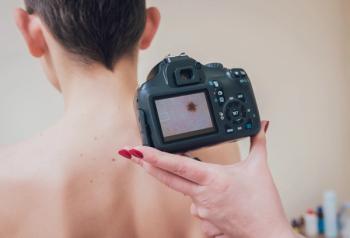
Prehab Helps Patients Become Fit for or ‘Bounce Back’ from Cancer Treatment
Prehabilitation can help patients become eligible for certain cancer treatments, or also help them recover from therapies, while also improving their overall health and fitness, an expert explained.
Prehabilitation, which is the process of preparing someone to undergo a medical treatment, can be beneficial for patients who are about to undergo cancer treatment such as surgery or radiation, but can also help to make an individual eligible for a certain therapies, too, explained Dr. Sarah P. Psutka.
Psutka, who is an associate professor of urology at the University of Washington and a urologic oncologist at the Fred Hutchinson Cancer Center in Seattle, explained that there are three main facets of prehabilitation: physical activity, nutrition and cognitive or emotional support.
“There are two key goals; One is to help the patient get through their therapy more successfully. The other piece of prehab, though, is that sometimes it can take a patient who's not a candidate for a specific intervention, and it could actually improve the likelihood of their becoming a candidate,” Psutka said.
Transcript
There are three critical core domains of prehabilitation: physical activity, or exercise as medicine; nutrition; but then also mental and cognitive support. And so, the prehab programs that are out there, many of them are sort of multi-domain, they cover all of the core domains to support a patient as they're going through therapy.
There are two key goals; One is to help the patient get through their therapy more successfully. The other piece of prehab, though, is that sometimes it can take a patient who's not a candidate for a specific intervention, and it could actually improve the likelihood of their becoming a candidate. … So, let's say somebody with prostate cancer — if you're taking care of a man with prostate cancer, and he has a lot of immobility and physical function deficits that make him potentially not a great surgical candidate, but he's been diagnosed with a low-risk prostate cancer and right now he's actually going to go on to a period of active surveillance. Well, that period of active surveillance is a great window of opportunity to think about getting that patient into a physical activity intervention, so that in the event that his cancer should ever progress, should ever become intermediate risk or high risk, he actually would be somebody who would be up against a decision around a surgical intervention or radiation.
(With prehabilitation), maybe we've moved the needle a little bit on his cardiopulmonary endurance, the management of his comorbidities, maybe we've helped him stop smoking, and so his lungs are stronger and his heart is stronger, and it's cardiovascular risk profile is lower.
(It’s the) same thing in non-muscle-invasive bladder cancer for someone who might someday have to be up against a decision about whether or not they undergo a radical cystectomy. If you're meeting someone for the first time, and they're coming in, and they're using an assistive device and need a lot of assistance at home, this could be a great person to partner with and say, “Hey, while you're going through your management, if you're non-muscle-invasive bladder cancer, BCG installations or whatever else, this is a great opportunity for you to work on your physical fitness, or nutrition, or again to stop smoking or sort of kick other habits that may potentially interfere with your candidacy for therapy down the road, should you ever need it.”
So, one of the things I like to think about what prehab is it's trying to get someone stronger for potential treatment. It's also hopefully making them so that they can bounce back from that. That's the resilience piece — bounce back from that the stresses of that that intervention more successfully.
But also, a lot of the stuff that we're talking about with prehab really helps people just feel better on a day-to-day basis, (such as) being well-nourished, being well-hydrated, having good physical performance. So, I think there's a lot of implications here for survivorship, which are really critical, too.
For more news on cancer updates, research and education, don’t forget to





